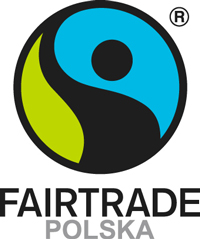Clean water indicies
BOD - is the biochemical oxygen demand in a 5-day period. It is an agreed formula which describes the amount of oxygen required to oxygenate organic substances. The index describes the average concentration of organic substances contributing to biodgradation. Exceeding the norms of BZT5 means that, the water contains too many organic substances, which may result in the lack of oxygen with the consequential death of organisms that rely on oxygen to survive.
ChOD - is the chemical oxygen demand. It is the method that determines the maximum organic substances allowed with respect to the amount of oxygen consumed within the oxygenation of these substances during chemical reactions. The most commonly used oxygenator to determine ChZT levels is chromate. ChZT using the permanganate method determines the changes in oxygenation.
The unit for measurement is milligrammes of oxygen in one litre of water.
CHLORIDES. These are anions found in natural and effluent water. They may derive from the ground, from natural deposits of salt (eg. from coal excavation) as well as effluent from industrial wastes. In winter they are used to salt roads (recently in smaller quantities). They are also found in artificial substances and sprays, and during rains they are washed into rivers. In the biological processes of people they are flushed into the sewerage systems of urban areas and find their way into surface waters. The treatment of water is not effective in their removal. They may only be removed through distillation or reverse osmosis.
SULPHATES. These are a commonly found substnce in natural water. Sulphates generally find their way into water through the eroson process of sedementary rock. Sources of sulphates in surface water may be urban effluent and industrial effluent.
PHOSPHATES. Sources are urban and industrial effluent as well as artificial manures and agricultural effluent. Phosphates in effluent are mainly due to washing powders (that's why in better ones they are replaced with zeolites) as well as human wastes and organic substances. These cause the levels of oxygen to deplete in water and cause oxygen starvation in aquatic organisms, especially fish.
CLASSIFICATION OF WATER CLEANLINESS
The classes of water cleanliness describe the quality of water sampled.
The cleanest water is of Class I. It is drinkable, may be used in the breeding of salmon and in industries which require Class I water.
Class II water is suitable for the raising of fish and for water-based recreation. Class III water is used for industry. Water that cannot be described within these three classes is referred to as Unclassifiable, and before use needs to undergo treatment.
The table below presents the values of certain indicies of contamination of surface water. The information is as a result of directives from the Ministry of the Environment, Protection of Natural resources and forestry dated November 5th 1991 (no.116/503).
Table for: clean water indicies (raw version)
Wskaźniki zanieczyszczeń źródłdowych wód powierzchniowych.
Indices of pollution of surface inland waters in Poland.
Nazwa wskaźnika
Indices of pollution Jednostka
Unit Klasa czystości
Class of purity I II III
Temperatura Temperature OC 22 i poniżej (and below) 26 i poniżej (and below) 26 i poniżej (and below)
Odczyn
Reaction pH 6,5 - 8,5 6,5 - 9,0 6,0 - 9,0
Zawiesiny ogólne (z wyj. nagłych przyborów wody)
All suspended solids (with exception of flooding) mg/l 20 i poniżej (and below) 30 i poniżej (and below) 50 i poniżej (and below)
Pięciodobowe biochemiczne zapotrzebowanie tlenu (BZT5)
Biochemical oxygen demand in 5-day period (BOD5) mg O2/l 4 i poniżej (and below) 8 i poniżej (and below) 12 i poniżej (and below)
Chemiczne zapotrzebowanie tlenu metodą nadmanganianową (ChZTMn)
Chemical oxygen demand determined by permanganate method (CODMn) mg O2/l 10 i poniżej (and below) 20 i poniżej (and below) 30 i poniżej (and below)
Chemiczne zapotrzebowanie tlenu metodą chromianową (ChZTCr)
Chemical oxygen demand determined by chromate method (CODCr) mg O2/l 25 i poniżej (and below) 70 i poniżej (and below) i poniżej (and below)
Tlen rozpuszczony
Dissolved oxygen mg O2/l 6 i powyżej (and above) 5 i powyżej (and above) 4 i powyżej (and above)
Azot amonowy
Ammonia nitrogen mg NNH4/l 1,0 i poniżej (and below) 3,0 i poniżej (and below) 6,0 i poniżej (and below)
Azot azotanowy
Nitrate nitrogen mg NNO3/l 5,0 i poniżej (and below) 7,0 i poniżej (and below) 15,0 i poniżej (and below)
Fosforany rozpuszczone
Dissolved phosphates mg PO4/l 0,2 i poniżej (and below) 0,6 i poniżej (and below) 1,0 i poniżej (and below)
Fosfor ogólny
Total phosphorus mg P/l 0,1 i poniżej (and below) 0,25 i poniżej (and below) 0,4 i poniżej (and below)
Twardość ogólna
Total hardness mg CaCO3/l 350 i poniżej (and below) 550 i poniżej (and below) 700 i poniżej (and below)
Chlorki
Chlorides mg Cl/l 250 i poniżej (and below) 300 i poniżej (and below) 400 i poniżej (and below)
Siarczany
Sulphates mg SO4/l 150 i poniżej (and below) 200 i poniżej (and below) 250 i poniżej (and below)
Substancje rozpuszczone
All dissolved substances mg/l 500 i poniżej (and below) 1000 i poniżej (and below) 1200 i poniżej (and below)
Żelazo ogólne
Total iron mg Fe/l 1,0 i poniżej (and below) 1,5 i poniżej (and below) 2,0 i poniżej (and below)
Fenole lotne
Volatile phenols mg/l 0,005 i poniżej (and below) 0,02 i poniżej (and below) 0,05 i poniżej (and below)
Miano Coli typu kałowego
Coli titre (coliform index) of excremental type 1,0 i powyżej (and above) 0,1 i powyżej (and above) 0,01 i powyżej (and above)
Bakterie chorobotwórcze
Pathogenic bacteria niewykrywalne (undetectable)






 Wydawnictwo „Zielone Brygady” - dobre z natury. Niektóre prawa zastrzeżone.
Wydawnictwo „Zielone Brygady” - dobre z natury. Niektóre prawa zastrzeżone.